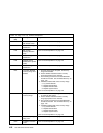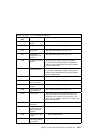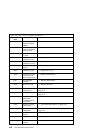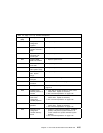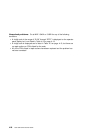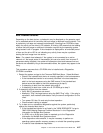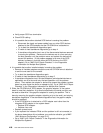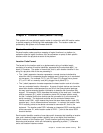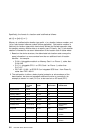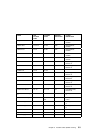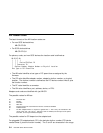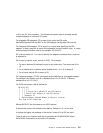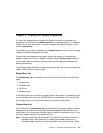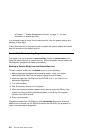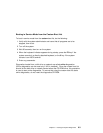
Specifically, the format of a location code is defined as follows:
pn[.n][- or /]pn[.n][- or /]...
Where p is a defined alpha location type prefix, n is a location instance number, and
[.n] is a sub-location instance number (where applicable). Sub-location notation is
used only for location types which have clearly defined and limited expansion sites;
for example, memory module slots on a memory card. Primarily, the [.n] sub-location
notation is intended for use as an abbreviation of the location code in cases where:
1. Based on the device structure, the abbreviated sub-location code conveys the
same information in a more concise form than an additional level of location
identifier - for example:
P1-M1.4 (pluggable module 4 on Memory Card 1 on Planar 1), rather than
P1-M1-M4
P1-C1.1 (pluggable CPU 1 on CPU Card 1 on Planar 1), rather than
P1-C1-C1
P2-Z1-A3.1 (LUN 1 at SCSI ID 3 on integrated SCSI bus 1 from Planar 2),
rather than P2-Z1-A3-A1
2. The sub-location is either a basic physical extension or sub-enclosure of the
base location, but does not represent additional function or connectivity; for
example, a drawer in a rack (U1.2) or a riser card on an I/O board (P2.1).
Name AIX
Location
Code
Location
Code
Physical
Connection
Logical
Identification
System Planar 00-00 P1
Riser Card P1.1 J39
Memory DIMM 1 00-00 P1-M1 J11
Memory DIMM 2 00-00 P1-M2 J28
Memory DIMM 3 00-00 P1-M3 J19
Memory DIMM 4 00-00 P1-M4 J39
Diskette Drive 01-D1-00-00 P1-D1 J16 Base Address
0x03F0
Keyboard 01-K1-00-00 P1-K1 J59 Base Address
0x0060
Mouse 01-K1-01-00 P1-O1 J56 Base Address
0x0060
Audio Port 01-Q2 P1/Q2
Diskette Port 01-D1 P1/D1 J16 Base Address
0x03F0
5-2 7043 43P Series Service Guide



